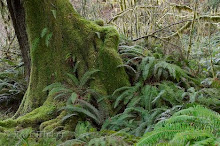An undeniable dilemma troubling Brazil is the destruction of the Amazon rainforest. The felling of trees arises for the sake of mining, logging, urbanization, farming, and ranching; this undoubtedly presents damaging circumstances not only upon wildlife but also upon humanity as a whole.
We shall first examine the impact that deforestation wields against animal life: the disruption of delicate ecosystems strips countless species of their habitats. "Today, more than 20% of the Amazon rainforest has been destroyed and is gone forever;" in light of this reality, "experts also estimate that 130 species of plants, animals, and insects are lost every day. At the current rate of destruction, it is estimated that the last remaining rainforests could be destroyed in less than 40 years." (Schaffner). For example, a four-square-mile area of rainforest alone may “contain … 125 species of mammals, 400 species of birds, 100 species of reptiles, and 60 species of amphibians” (Wright). Particularly, Amazonia is home to "more than 1,500 kinds of birds," whose extinction looms in the irresponsible exploitation of the environment (Galloway).
However, it is here that we venture to overcome the reckless shortsightedness of deforestation. Brazil must constructively channel its Catholic majority toward sustainable development in accordance to the notion of stewardship.
The essential question is this: how may principles of Catholic Social Teaching encourage individuals to combat Brazilian deforestation and thereby the subsequent animal extinction?
